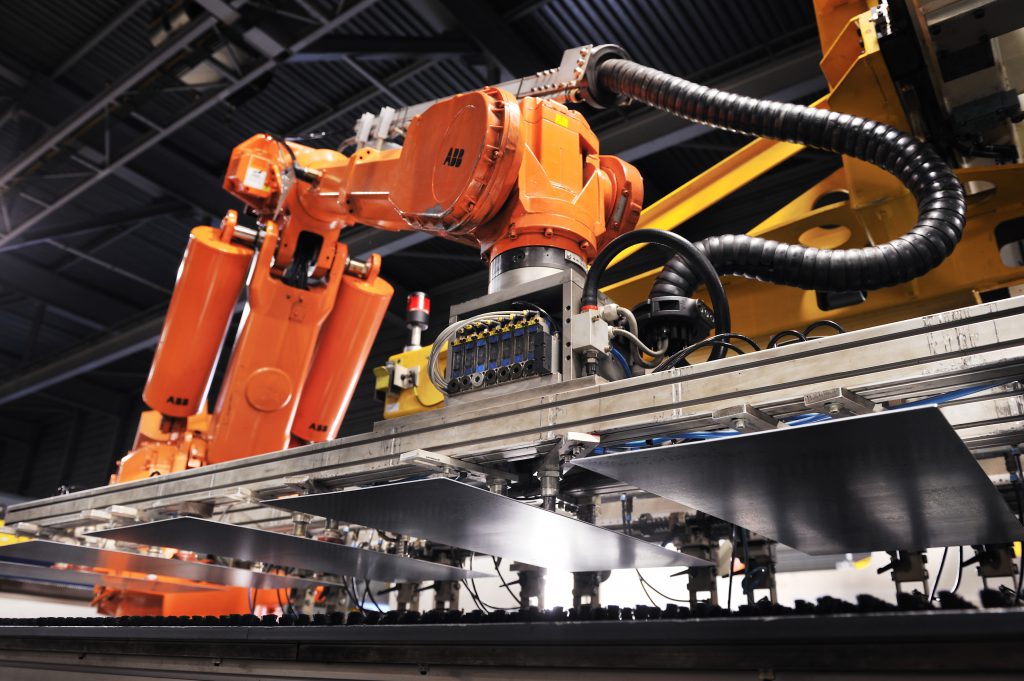-
Tailor-welded Blanks
The automotive industry continuously asks for lighter car body components. The production line ‘tailor-welded blanks’ lives up to that demand.
Laser-welded blanks consist of polygonal sheets that may have a different thickness or different material characteristics which are welded together into one car body part.
How does this work?

The ‘Tailor-welded blanks’ production line can produce laser-welded blanks out of wide strips, it consists of two sections: cutting or ‘blanking’ lines and welding lines.
In the blanking lines, coated and uncoated coils are cut or punched into ‘subblanks’ according to the geometry specified by the customer. The cutting and punching is done with a shear or a die that is mounted in the mechanical press. Depending on the construction of the die, every press cycle can produce one or more subblanks with high cutting edge quality. These subblanks are removed from the die by means of magnetic conveyor belts and are piled on pallets by a stacker. These pallets are then sent to the automated warehouse, using roller conveyors and shifting cars, for further processing.
The welding activity consists of welding two or more subblanks together by means of a laser beam without lead-in wire. As there is no lead-in wire, the edge of the side to weld needs to meet strict demands concerning rectilinearity, smoothness and uniformity. During welding, the geometry and the surface quality of the weld are constantly monitored.
-
The production process
Before


